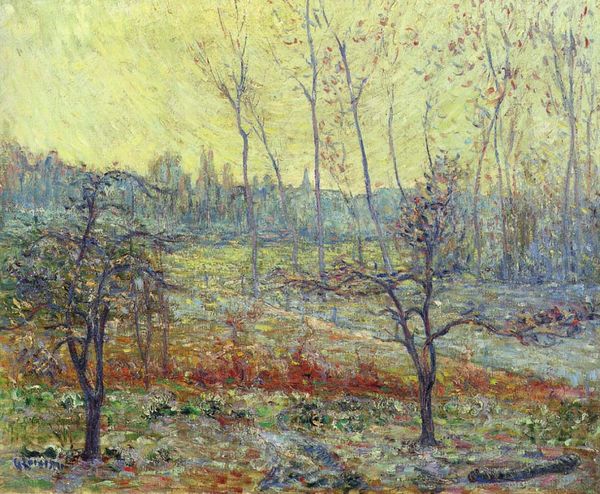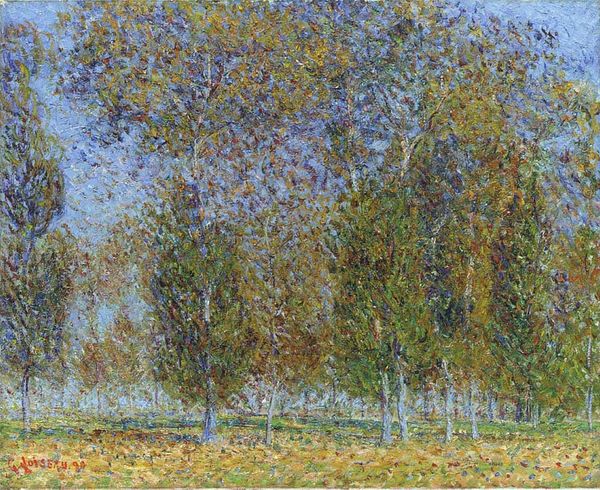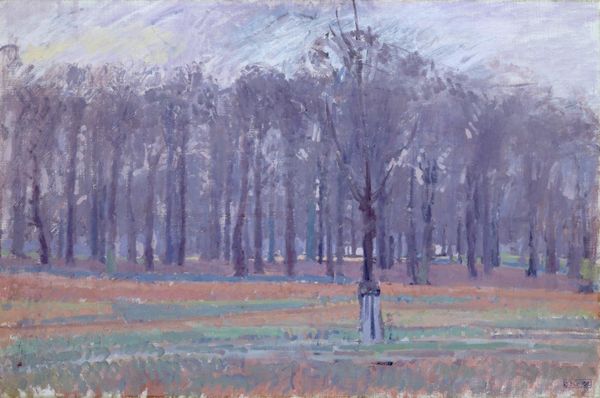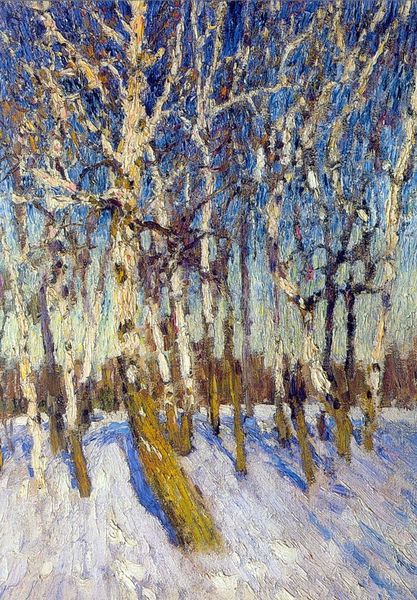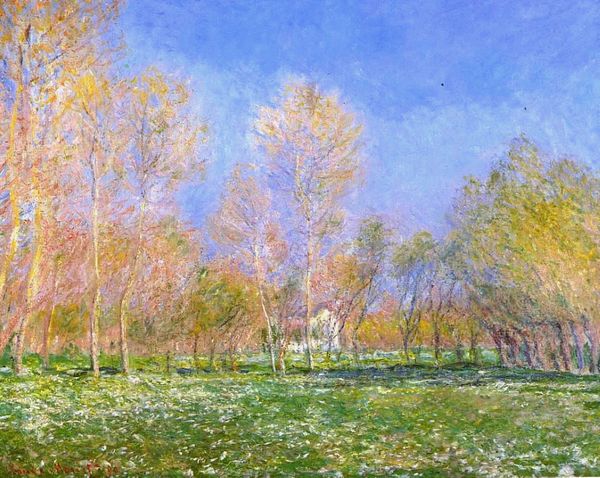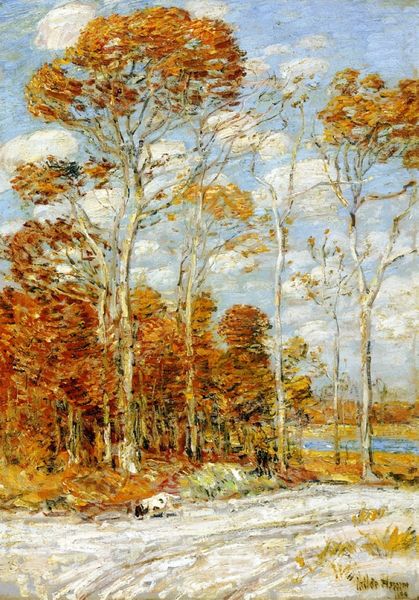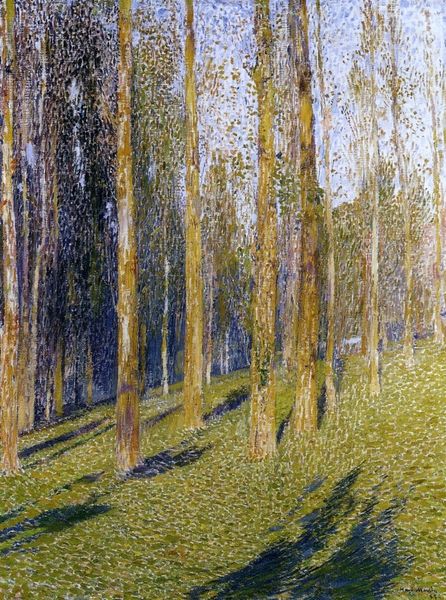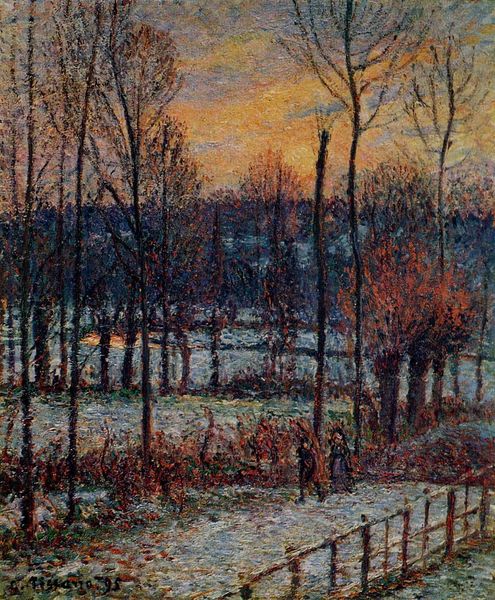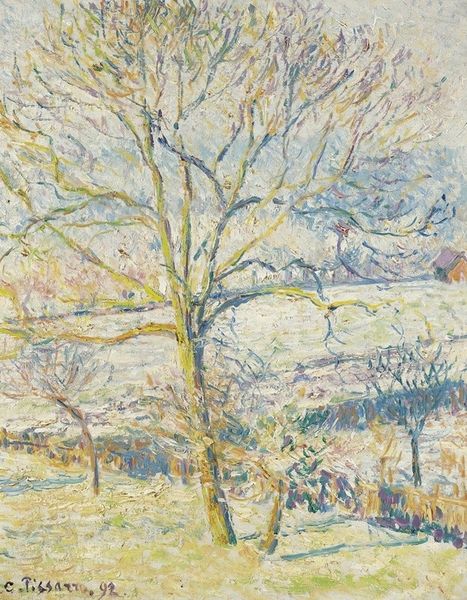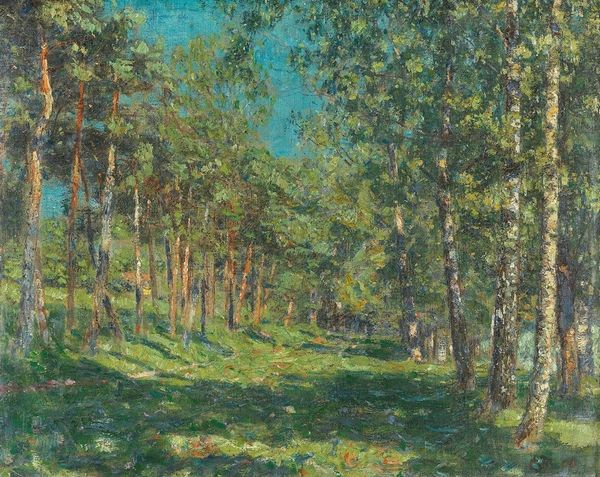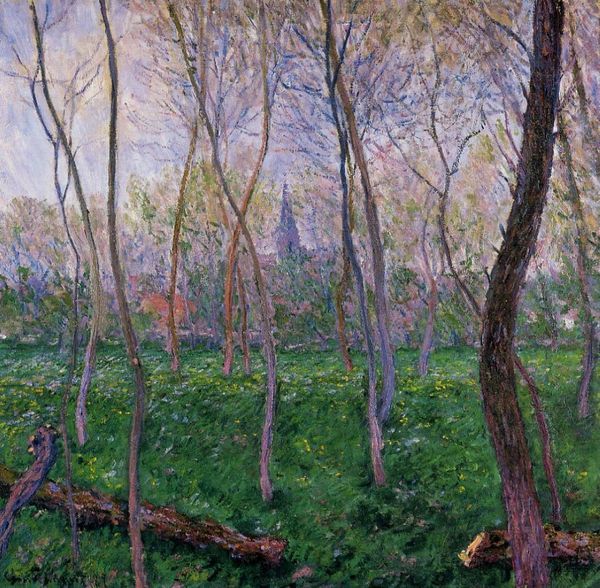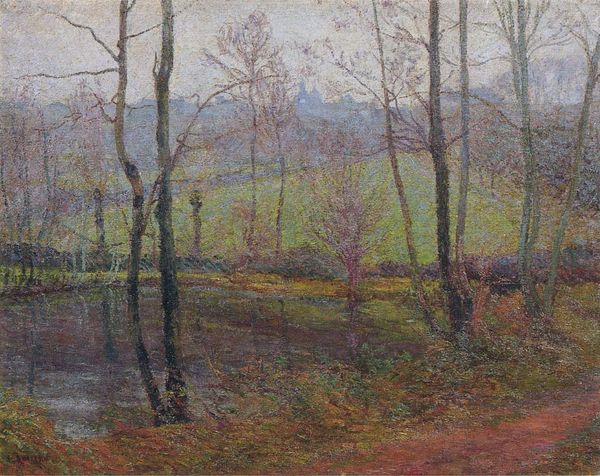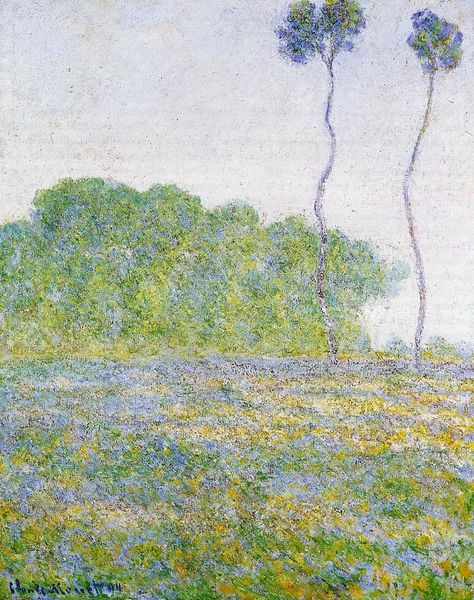
tempera, painting, plein-air, impasto
#
tree
#
tempera
#
painting
#
plein-air
#
landscape
#
impressionist landscape
#
nature
#
impasto
#
forest
#
plant
#
abstract nature shot
#
wilderness
#
post-impressionism
Copyright: Public domain
Kazimir Malevich's "Spring Landscape" presents us with a textured field of vision, composed with small brushstrokes in subdued yellows, browns and blues. The verticality of the slender trees disrupts the horizontal emphasis, creating a balanced tension that animates the entire picture plane. Malevich destabilizes the traditional landscape, using repetitive brushstrokes, almost as a form of visual code. The painting suggests the sensation of a place rather than its literal representation. We might interpret the trees as signs of nature, but more crucially, they function as formal elements that activate the painting's surface. The seemingly simple composition invites a deeper engagement with the painting's structure, prompting an interpretation of how the elements create meaning, challenging conventional ways of seeing and representing the world. It’s through this careful arrangement of form and texture that Malevich achieves a new kind of visual language.
Comments
No comments
Be the first to comment and join the conversation on the ultimate creative platform.
